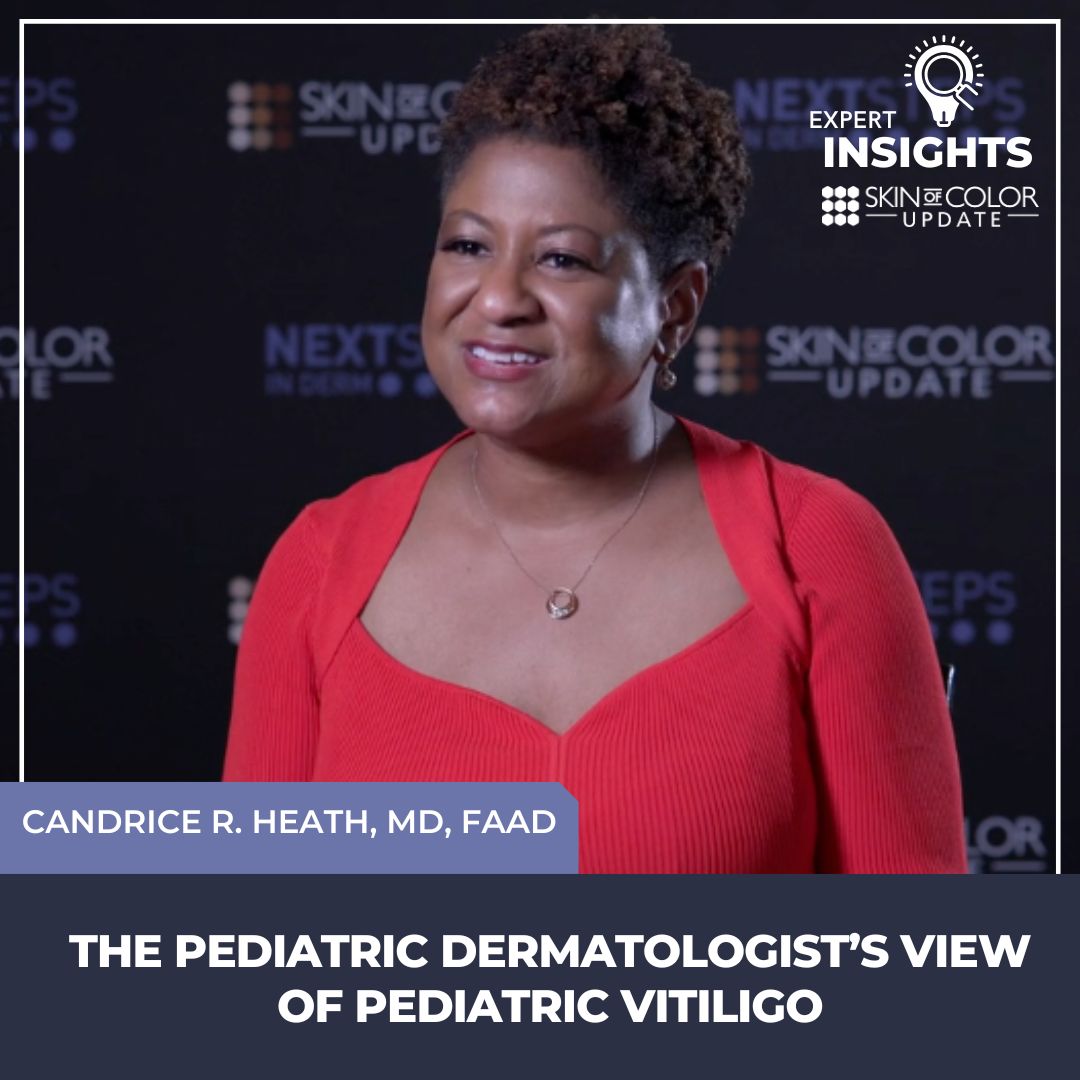“Try to do something” is Dr. Candrice R. Heath’s motto for clinicians when treating pediatric vitiligo. Next Steps in Derm, in partnership with Skin of Color Update, interviewed Dr. Heath, associate professor of dermatology at Howard University. Watch as Dr. Heath provides insight as a pediatric dermatologist into treating vitiligo in children. Learn why understanding the parent and patient experiences are key for any clinician. Find out the challenges in treating pediatric vitiligo. Plus hear the perspectives of other pediatric dermatologists in treating this condition.
Further Reading
If you want to read more about pediatric vitiligo, check out the following articles published in the Journal of Drugs in Dermatology:
The Pediatric Dermatologist’s View of Pediatric Vitiligo
ABSTRACT
Background: No guidelines exist for pediatric vitiligo.
Objective: To identify practice patterns of pediatric dermatologists treating vitiligo.
Methods: A PeDRA survey was completed online by 56 pediatric dermatologists.
Results: Practitioners reported feeling most comfortable treating 13- to 17-year-olds and least comfortable treating infants. Quality of life was assessed by interview in 89.3%. Topical calcineurin inhibitors (TCIs), topical corticosteroids (TCSs), narrowband UVB, coverup makeup, topical JAK inhibitors (tJAKis), and 308-nm laser were the leading vitiligo therapeutics chosen. 94.5% of practitioners reported experiencing frustration due to difficulties procuring therapies.
Conclusion: Pediatric vitiligo has notable effects on quality of life. Some therapeutic options exist which are preferred by pediatric dermatologists. There is a need for more data on therapeutics in infants and young children.
A Review on the Use of Topical Ruxolitinib for the Treatment of Vitiligo
ABSTRACT
Background: This article describes the clinical trial, safety, and efficacy of ruxolitinib 1.5% cream or repigmentation in patients with vitiligo.
Data Sources: A systematic review was done using ruxolitinib or Opzelura in MEDLINE (PubMed) and EMBASE. ClinicalTrials.gov was used to identify ongoing or unpublished studies.
Study Selection and Data Extraction: Studies included were written in English and relevant to pharmacology, clinical trials, safety, and efficacy.
Data Synthesis: In two 52-week phase 3 trials, 52.0% of subjects had at least 75% improvement in their Facial Vitiligo Area Scoring Index (F-VASI).
Relevance to Patient Care and Clinical Practice: Ruxolitinib is a topical Janus kinase (JAK) inhibitor newly approved by the US Food and Drug Administration for repigmentation in patients with vitiligo.
Conclusion: Topical ruxolitinib is the first medication approved for repigmentation in patients with vitiligo. It is a safe and effective treatment; however, cost may be a barrier to some patients when prescribing this medication. Trials to compare the efficacy and side effect profile of topical ruxolitinib with other topical treatments are still needed.
Did you enjoy this video interview? Find more here.

